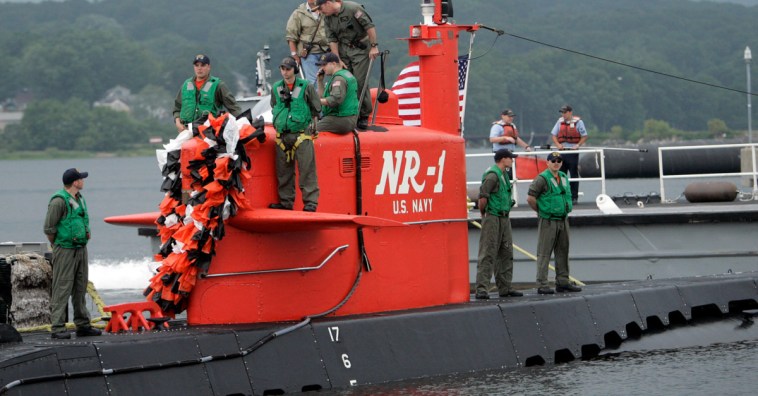GROTON, Conn. — A once-secret submarine in U.S. military research and expeditions is being celebrated for its advanced technology, exploration of the ocean floor and role as a workhorse.
Videos By Rare
The nuclear-powered NR-1 launched in 1969, the same year the U.S. put a man on the moon, and was taken out of service in 2008. It is now on display, minus some of its parts, at Submarine Force Museum in Groton, joining the museum’s collection, including the Nautilus, the first nuclear powered ship in the U.S. Navy when it was commissioned in 1954.
“It was innovation. It was revolution,” Adm. Jonathan Greenert, chief of naval operations and engineer of the NR-1, said at a museum gathering Wednesday. “It pushed horizons of engineering and technology and took us now to many, many areas of this world. We could get to the ocean floor.”
Stephen Finnigan, supervisory curator at the museum, credited the strength of the country’s industrial base, specifically Electric Boat of the General Dynamics Corp., which built the NR-1.
“They made this as they do today, made us owners of the undersea domain,” Greenert said. “She really was a technical marvel.”
The NR-1 was known primarily as a research vessel, but also carried out military missions that still remain a secret. Veterans who served aboard the tiny sub during the Cold War say it was one of the most fascinating assignments of their careers and their wives still don’t know all the details.
The submarine was designed to maneuver on or close to the ocean floor, to detect and identify targets on the bottom and lift objects from the depths. It could roll on wheels and illuminate the sea floor.
It performed geological surveys, oceanographic research, installation and maintenance of underwater equipment, and underwater search and recovery, including the recovery of parts of the Challenger shuttle destroyed in 1986.
“This vessel expanded our range through national security missions, lot of oceanography, a lot of ocean engineering, a lot of national security missions that, well, we don’t talk about today, but they made a big difference,” Finnigan said.
U.S. Rep. Joe Courtney of Connecticut said the submarine museum contacted his office to “make sure that this treasure did not sort of end up in a scrap yard.”
The sail, upper rudder, two propellers and a manipulator arm are on display at the museum. The hull and machinery are set to be recycled.

